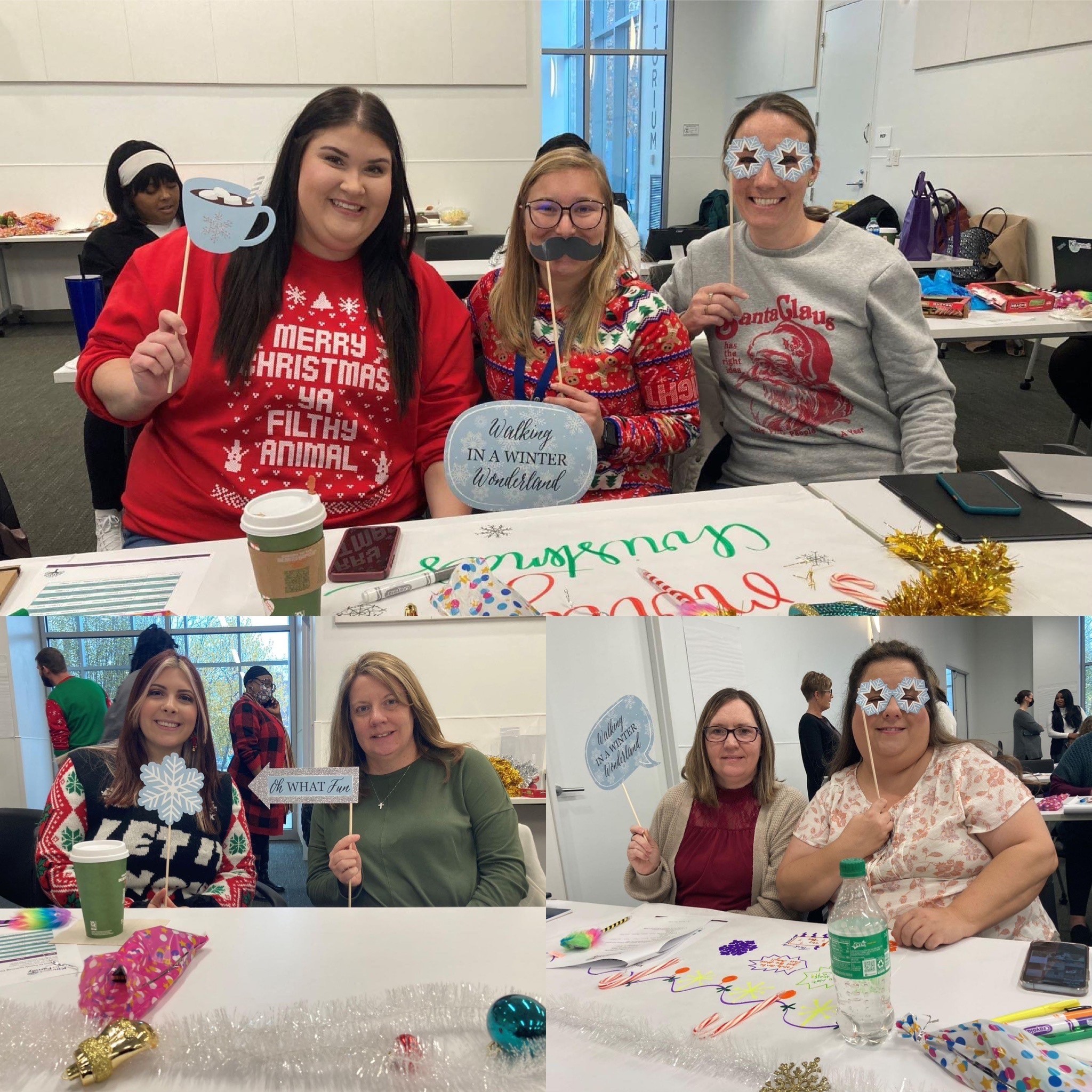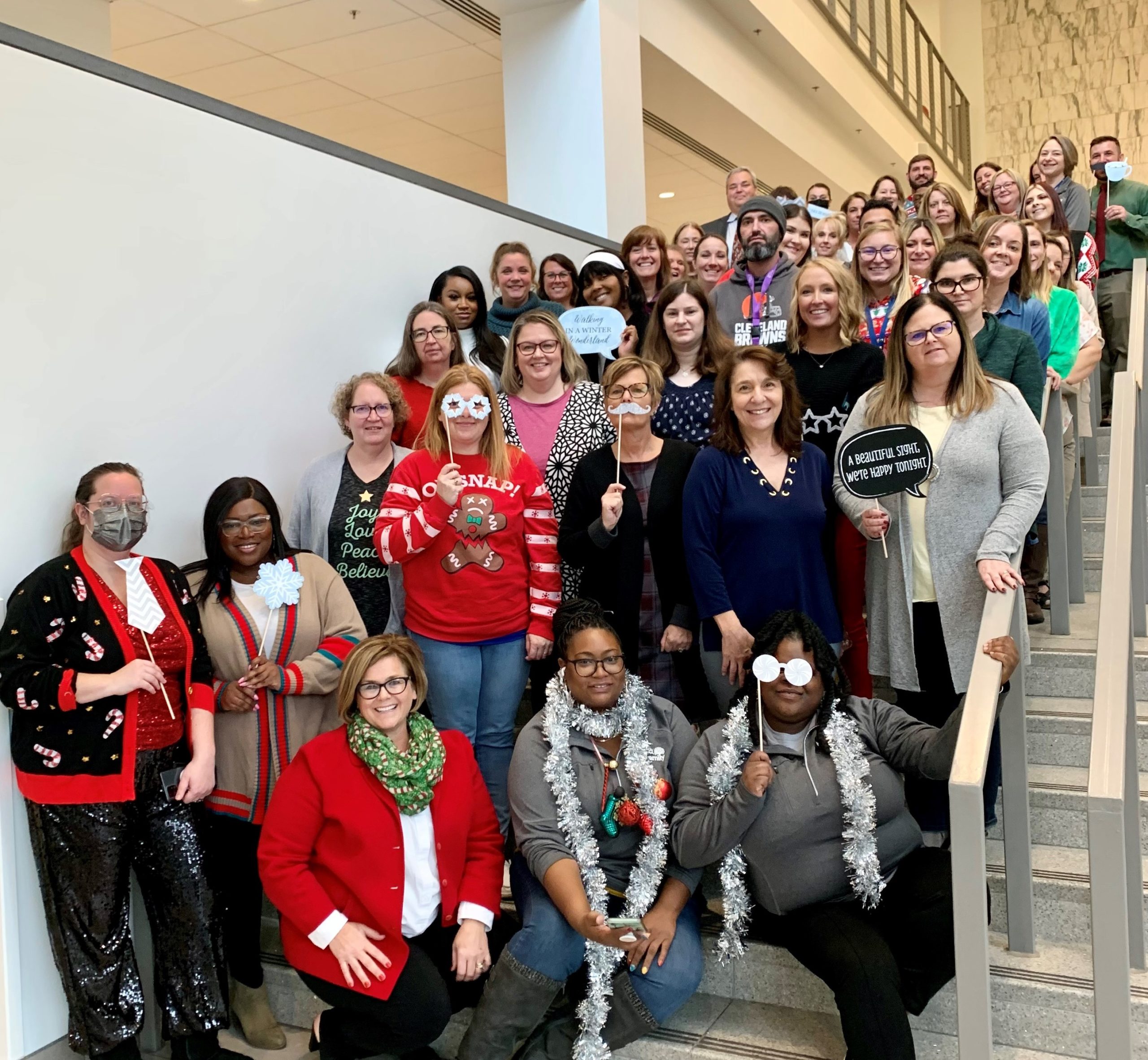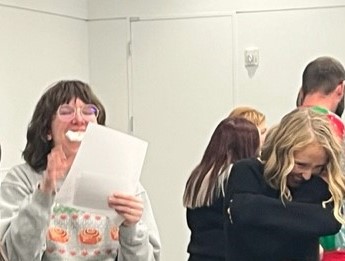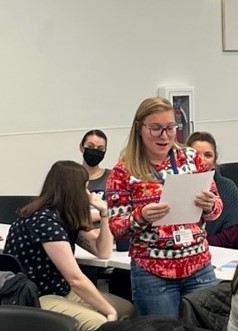Kinnect to Family Statewide Joint Learning Community

Attendees eased into the day by creating a little holiday cheer.
Kinnect to Family (KTF) teams from around the state came together for the Statewide Learning Community on December 6. Participants engaged in a day of program updates, sharing experiences, and building meaningful connections.
Program Updates
During program updates, KTF staff asked teams to reflect on their agency’s relationship with the courts. KTF is embarking on a Kin-First Judicial Peer-to-Peer project. The goal is to create a resource library, training modules, and build a network of champions that can collaborate across the state and provide support to each other. KTF specialists and supervisors shared what works well, what does not work well, and what resources would be helpful in this area. KTF will have a convening around this January 11 in Columbus.
Dive into Data
Then, specialists and supervisors dove into program data with Data Manager Cait Proctor-Frazier who began by emphasizing the fact that every data point is a person. Coach Lorie Bricker shared a story about a young man KTF served who was in congregate care. His mother was unable to care for him due to substance use disorder. He lived with an aunt, but entered congregate care due to behaviors that resulted from the trauma he experienced earlier in his life.
The young man had a special connection with his half-brother’s father and viewed him as a father although they were not biologically related. The KTF specialist invited the father figure to a family meeting. The father figure was humbled to be included. Team members let him lead the meeting. They developed a case plan that included visitation for him. Now, the young man will soon leave congregate care to live with him. It is so important to elevate family voice.
A deeper dive into the 2020 effectiveness evaluation by Kaye Implementation and evaluation found that youth served by KTF:
- KTF youth were almost 2.5 times more likely to live with family members
- They spent significantly more time visiting with kin while in out-of-home care
- They were more likely to achieve custody with kin, than be adopted
- KTF served 2,100 children in five years (including active, on hold and completed cases, as well as children assisted)
- KTF found 160,000 family connections for youth

With the program expansion to serve children at any point in a children services case, KTF served more youth in ongoing cases than in initial custody. As such, placement rates have varied by case status, with of those at 50% initial custody placed with kin, versus 42% with ongoing cases. Placements with family for preventive cases varied from 50-70 % as compared to those children in permanent agency custody none of whom found placement with family. The KTF staff continues to explore these findings to better understand them and develop strategies for placing more children with kin. Teams reviewed Kinnect’s menu of supports and came up with an action plan for their county.
Small group exploration
Next, small groups of specialists and supervisors explored barriers to placing children with kin. Teams cited:
- Ongoing workers not valuing kin,
- Court barriers,
- Relatives being held to stricter standards than foster families,
- Background check issues
- Previous children services cases.
Then, they brainstormed solutions and actions that may help.
After lunch, specialists looked at their burnout and stress, and how these were manifested in their work. They explored breathing techniques, spheres of control, and concern and committed to recharging. Supervisors explored how counties can utilize their backup specialists and keep them engaged by looking at a process developed for one specialist’s maternity leave. And then, everyone recharged with a birthday cake! Kinnect to Family celebrates five years of serving families this month.
Meaningful Connections
Finally, the KTF ended their day building meaningful connections with three activities.
 In randomly assigned groups, teams got a fictional holiday movie character and were tasked with writing a family letter that featured news from each team members. Teams shared their letters as a humorous way of learning about each other’s work.
In randomly assigned groups, teams got a fictional holiday movie character and were tasked with writing a family letter that featured news from each team members. Teams shared their letters as a humorous way of learning about each other’s work.
Next, teams wrapped a gift without all the necessary materials. They were missing tape, scissors, ribbon, or adequate paper. Each team wrapped its gift using what was available. Like KTF’s work with families, teams met each where they were, figured out how to use what they had, and had gifts to show at the end.
Lastly, teams held a snow-eating contest. Each team had one member who had to communicate phrases to the others with marshmallows in their mouth. The speaker added a marshmallow each time the team got a phrase correct. Speakers got increasingly hard to understand. Team members leaned in, listen to what was really being said, and ask questions. Sometimes we don’t hear what we thought we heard.
The Kinnect to Family team adjourned until the next Statewide Joint Learning Community June 6.
